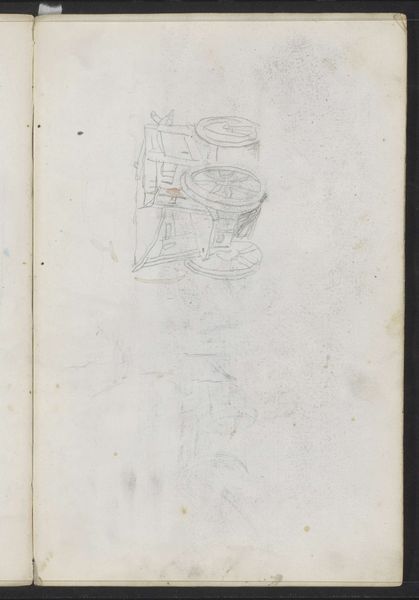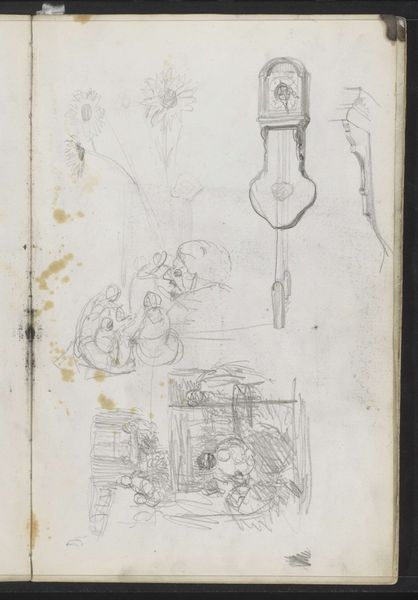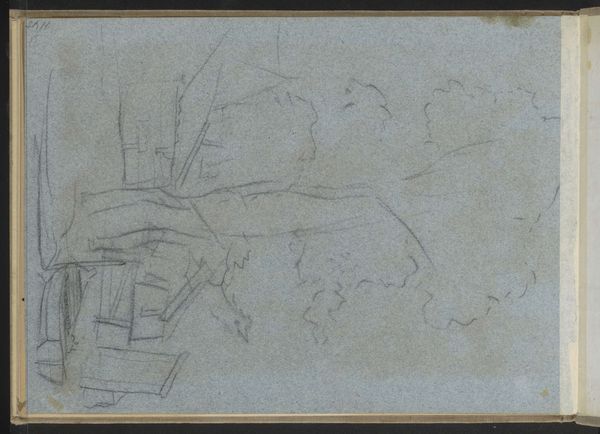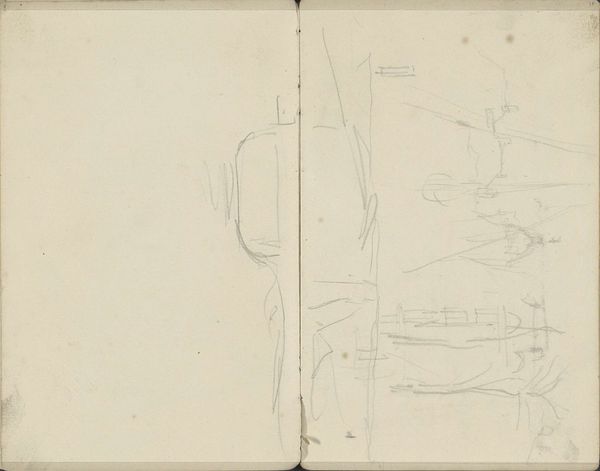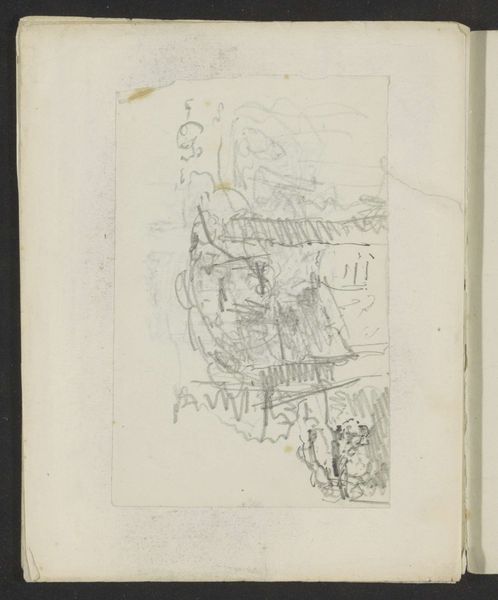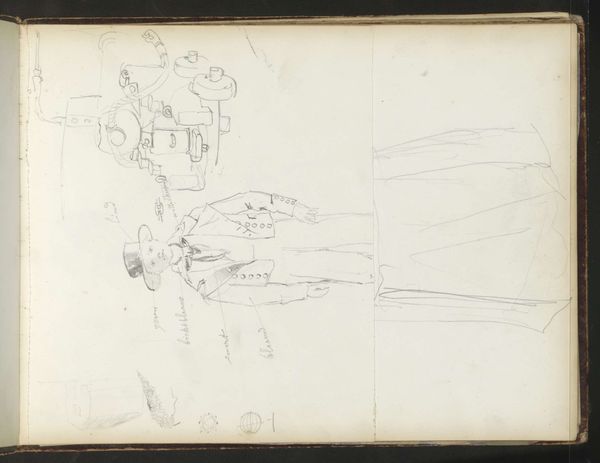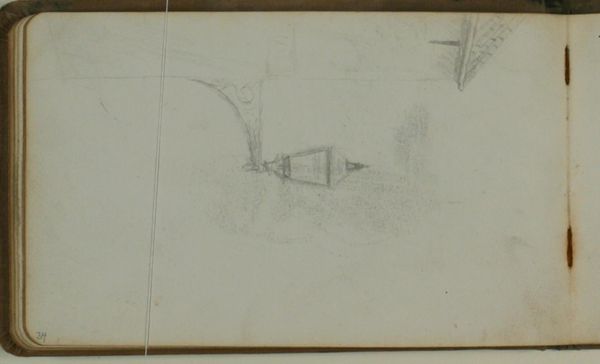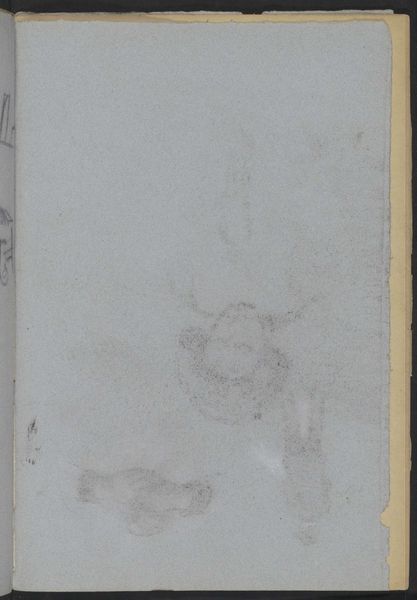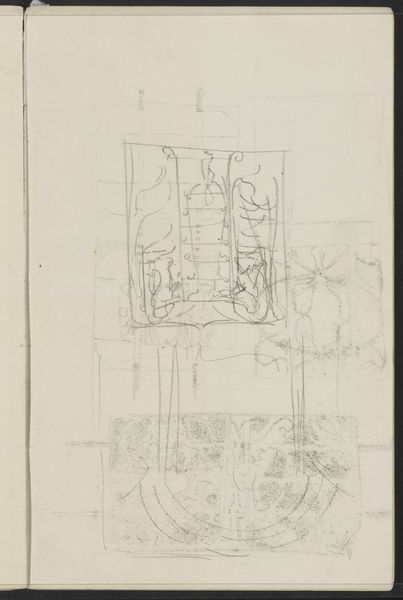
drawing, pencil
#
drawing
#
landscape
#
pencil
#
realism
Copyright: Rijks Museum: Open Domain
Curator: Here we have Jozef Israëls' drawing, "Man Building a Wooden Structure in a Garden," created circa 1855-1859. It's a pencil drawing and a striking example of Realism, currently housed in the Rijksmuseum. What's your immediate take? Editor: Well, my first thought is the sketch-like quality gives it an intimate feel, like peering into the artist's private creative process. The seemingly mundane act of building takes on a quiet dignity in the artist's hand. Curator: Indeed. And let's consider that quiet dignity within the context of the mid-19th century. Israëls was deeply interested in depicting the lives of the working class and peasantry, elevating the common man. So we see the dignity but also a realness. This is not idealized labor. Editor: Precisely. The Realist movement aimed to show the world as it was, often focusing on the laboring classes who were frequently overlooked in art. Where might this subject sit in the history of representing labor and the dignity of workers? How might someone in his community felt represented—or unrepresented? Curator: Israëls occupied a unique position. He brought the aesthetic values and skills he learned as an academic painter to scenes of everyday labor. Consider Courbet’s "Stone Breakers," though that’s painting and a few years earlier, the core sentiments toward Realism were parallel to those guiding Jozef Israëls, and how this artist in turn would be embraced as his own social-realist successors pushed his legacy into our present. Editor: That's a great connection. Also consider Israëls' material. Pencil offers a kind of unvarnished access, not the heroic tone associated with other paintings of the era. Do you think this contributed to its popular appeal? Curator: I believe so. Its accessible medium aligns perfectly with the subject matter, adding to its relatability. Furthermore, the social and political climate in Europe at the time, with growing socialist and labor movements, created an audience hungry for art that reflected their lives and concerns. This image enters directly into conversation with those rising social and political perspectives. Editor: It’s fascinating how such a simple drawing can encapsulate such complex socio-political currents. Thank you for helping unpack all that this image has to offer! Curator: My pleasure. I think by looking at these quieter moments in art history, we better appreciate the scope of how daily existence has shaped aesthetic principles and cultural expression.
Comments
No comments
Be the first to comment and join the conversation on the ultimate creative platform.
